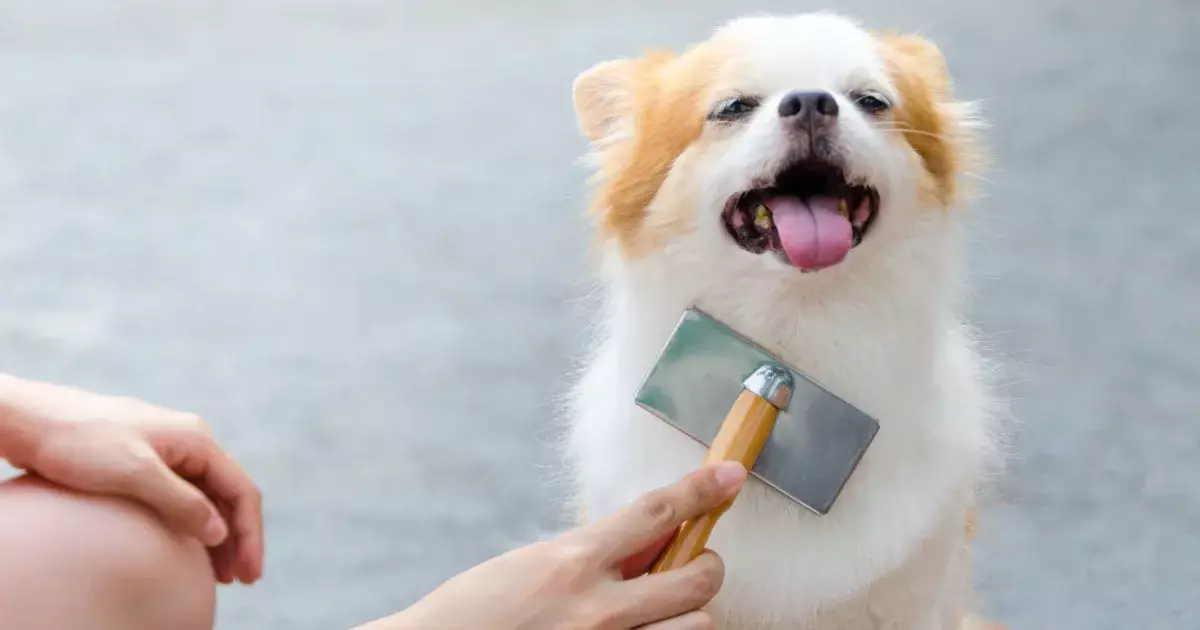Maintaining a furry companion comes with a host of responsibilities, and one significant aspect that often gets overlooked is the grooming process. While dogs can perform some self-grooming, such as licking, they greatly benefit from human assistance. Regular brushing is a vital practice that promotes not only cleanliness but overall health for your canine buddy. Let’s delve into the reasons why brushing should be an integral part of your dog care routine.
Brushing your dog’s coat goes beyond keeping loose fur from scattering across your home. It plays an essential role in distributing natural oils throughout their skin and fur, contributing to a healthy and shiny coat. This activity removes dead hair and dirt, preventing unwanted mats or tangles. Additionally, incorporating time for brushing fosters a bonding experience between you and your pet. It’s a moment of intimacy where you can connect, enhance your dog’s comfort level, and ensure they are well-groomed.
Mentioning the impact of shedding, frequent brushing reduces the amount of stray fur you find on your clothes, furniture, and other surfaces. For people who suffer from allergies, less fur in the environment can mean a more manageable living situation. Investing time in a regular brushing schedule can save you countless hours of cleaning.
Apart from hygiene, brushing is an excellent opportunity to observe your dog’s overall health condition. As you groom, you should be vigilant for any signs of abnormality in their coat or skin. Look out for issues such as matting, unusual dryness, oiliness, or the presence of parasites like fleas and ticks. This close interaction allows you to identify any lumps, bumps, or abrasions that may require veterinary attention. Detecting these issues early can be crucial for your dog’s well-being.
As dogs mature, it’s not uncommon for them to develop new lumps and bumps, which may concern pet owners. Regularly brushing your dog allows you to monitor these changes closely and take appropriate action when necessary.
Understanding Coat Types
Like humans, canine coats vary significantly among breeds, and understanding these differences is vital for effective grooming. Long-haired breeds, such as Golden Retrievers or Shih Tzus, require frequent grooming to prevent tangles and mats from forming. For such dogs, using the correct type of brush, like a pin brush, is essential. This type of grooming tool can access the undercoat and remove loose fur without causing pain, making it the best option for maintaining health and comfort.
On the other hand, short-haired breeds, such as French Bulldogs or Beagles, need less frequent grooming. While they can go weeks without a brush, occasional grooming can still be beneficial to remove loose hair and dirt. Rubber brushes and grooming gloves are great options for these breeds, as they make the process enjoyable for both you and your pet.
For wiry-haired breeds like Terriers, a slicker brush is often the best choice, followed by a comb to ensure thorough grooming. These dogs might require a stripping knife to eliminate dead hair—knowledge of proper technique is essential here.
Once you know the type of coat your dog has, mastering the right brushing technique is also critical. Always brush in the direction of the fur’s growth and be gentle. Dogs generally dislike having their fur brushed backward, and aggressive brushing can lead to discomfort or pain. If you meet with mats, apply a coat conditioner or mat spray to help loosen them before carefully working through the tangles with a comb or mat-splitting tool.
Safety should be a priority, especially when it comes to cutting out mats or tangles; using scissors requires caution to avoid injuring your pet accidentally. If you encounter a mat you can’t manage, consider consulting a professional groomer for help.
Seeking Professional Help
While brushing at home is a crucial skill for every dog owner, there is no shame in enlisting professional help if necessary. Groomers are well-versed in various coat types and possess the tools to manage even the most tangled fur. If your dog has a particularly challenging coat or simply doesn’t enjoy grooming, experienced groomers have the expertise to ease your pet through the process.
Brushing is more than a chore—it’s a critical part of responsible pet ownership. By investing time in grooming, you’ll keep your dog’s coat healthy, identify potential health issues early, and enhance the bond you share with your animal companion. Make grooming a regular part of your routine, equipped with the right knowledge and tools, for a happy and healthy dog.

